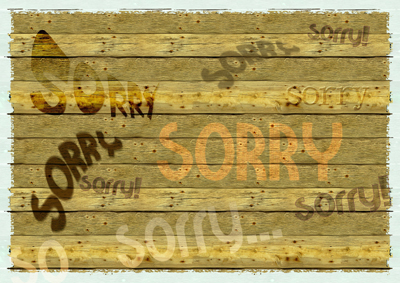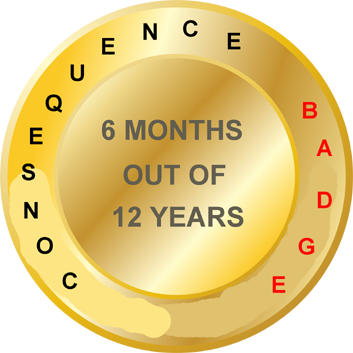The Habit Of An Eye For An Eye
THE HABIT OF AN EYE FOR AN EYE: CHANGING THE PENAL SYSTEM FOR NON-VIOLENT CRIMES (ISSUE 128) MAY 13, 2014
By Diane Gold
We are raised to believe an eye for an eye is a civilized technique for cooperation and balance in our society. Social proof teaches us that many live by it, and social proof is the phenomenon that lets us feel comfortable about doing what we see others doing. So, we do it. When someone wrongs us, scorns us, steals from us, murders us; our egos are burned. We sit in humiliation because we didn’t see it coming. that Our ego tells us that if we don’t act, we will look weak. We wonder why we weren’t the first to scorn. Is this the way of civil, educated people?
LICKING MY WOUNDED EGO
 Recently, I learned a big lesson, or, rather, I was reminded of an old lesson that I believe is as inherent as our survival instincts which lead us to an eye for an eye. I was asked to help a friend use the punishment system on her child. I did not look at the end results of this situation that was spinning out of control. But, I said I’d lend a hand. Not until the punishment I helped to deliver was hijacked by intervention from the other parent did I realize I was acting out of my belief system and into a system which lacks cooperation and respect.
Recently, I learned a big lesson, or, rather, I was reminded of an old lesson that I believe is as inherent as our survival instincts which lead us to an eye for an eye. I was asked to help a friend use the punishment system on her child. I did not look at the end results of this situation that was spinning out of control. But, I said I’d lend a hand. Not until the punishment I helped to deliver was hijacked by intervention from the other parent did I realize I was acting out of my belief system and into a system which lacks cooperation and respect.
My ego started to jump around and think I had to show the punishee that no one gets away with circumventing my mighty rule. I was watching my ego be out of control And then, I was able to break the cycle of thought and realize that this ego stroking, not only doesn’t help the situation but had nothing to do with the original issue I was working to help. I had relegated myself to licking my wounded ego. With this realization, I stopped and started writing this article.
THE HABIT OF PUNISHMENT
 We’ve spoken before about habits that are internal, such as addiction to cocaine, and external, such as the habit of punishment and feeling powerful from this technique. In this case, I agreed to use the deprivation method of behavior to restore order, that is, the taking away of a freedom to maintain discipline. There is a better way.
We’ve spoken before about habits that are internal, such as addiction to cocaine, and external, such as the habit of punishment and feeling powerful from this technique. In this case, I agreed to use the deprivation method of behavior to restore order, that is, the taking away of a freedom to maintain discipline. There is a better way.
The synonyms for civilization – that means being civilized – are advancement, enlightenment, development. How can we call barbaric, vindictive behavior for the sake of ego soothing any of these? It is preposterous.
We, humans, are a funny bunch. We cling to our basest behaviors even though we go all out in the personal development department. What’s the use of meditating or doing our tai chi if we don’t take the knowledge and apply it to world situations?
HOW WE ACT IN ADVERSE CONDITIONS
In martial arts or other mind/body training, we say that the only way to evaluate how far we have progressed is to look at how we behave in adverse situations. Here’s what I mean:
When we are kind to someone we like, this act does not require us to utilize the patience, love and understanding we have cultivated through any cultivation of mind/body aka personal development training. When we are civil to someone we do not like, this shows our discipline and personal power, our “civilized” mind and is the only time we can know our true nature.
WHEN THE WRONG-DOER DOES OR DOES NOT FEEL REMORSE
I regularly get to see the punishment system in action in almost every fiction film and television show I watch. She murders him, so she has to give up her life to prison. An eye for an eye. One way it works may be familiar to us:
When someone commits a crime and shows no remorse; we tend to have no sympathy, no mercy, have no inclination to show understanding, wish for a large consequence to be handed down and label the person a sociopath.
 When someone commits a crime and shows remorse; we are often eager to lend an ear, show mercy, wish for a small consequence with special privileges for this person and label the person a regular one who made a mistake.
When someone commits a crime and shows remorse; we are often eager to lend an ear, show mercy, wish for a small consequence with special privileges for this person and label the person a regular one who made a mistake.
Judges and juries, who determine what consequence a wrong-doer will get, are supposed to be impartial to the influence that knowing the subject’s position on remorse yields and are supposed to evaluate facts. Since whether or not someone shows remorse is a fact, it may come into play with either the most experienced judge or the first time juror. From where this vengeful feeling for the non-remorseful labeled sociopathic comes is a matter for further study.
CONCLUSION
All through history, there are stories of an eye for an eye, stories of how the person who does a wrong pays with a consequence of time in prison or beatings or sacrifice of life. What benefit comes from imprisonment? If someone is on a killing spree and is removed from being able kill, obviously society is being protected. When people commit crimes of non-violence, what’s the point? Couldn’t another method of consequence work?
What if we had a different set of protocols for non-violent crime where the consequence was based on earning back the reputation? What if people became used to seeing this new method through social proof? Would we evolve to a society without need for the penal system as we know it? Truly, I am confident this answer is yes.
ALTERNATIVES TO AN EYE FOR AN EYE ACTION STEPS
 1) The wrong-doer would wear a consequence badge on the right breast pocket at all times, which would signify having done a social wrong and would be warn based on the giver of consequences’ decision. A digital readout would display total time of consequence and total time served.
1) The wrong-doer would wear a consequence badge on the right breast pocket at all times, which would signify having done a social wrong and would be warn based on the giver of consequences’ decision. A digital readout would display total time of consequence and total time served.
The philosophy behind this is that we care what others see in us and would avoid doing wrong so as to avoid such a badge. Another possibility would be to wear a bright orange ID tag around the neck that was required to be seen from the back of the wrong-doer.
2) When someone committed a non-violent crime; part of the protocol would be to use that person’s skills to build or maintain an already built organic fruit/vegetable or solar or wind farm that those who had no skill would learn to work. This would not be a reward for committing a crime; it would be a way to fortify our society. A large percentage of the wage salaries made would be donated to fund an education program for the unskilled in our society to become skilled. Win, win.
3) The wrong-doer would punch into a website at various intervals throughout the day, similar to head count in a prison. Since the wrong-doer would be responsible to keep her GPS device on for tracking, any failure to comply could be corrected without much trouble.
I am reminded of the hierarchy in a drug rehab in Delray Beach. The structure was based upon patients’ gaining status for tattling on the other patients to the staff. If we tattled, we would get closer to being the head patient with more responsibility. This worked famously because everyone wanted to be the head patient since it looked good to the probation officer. Everyone was telling on everyone. Well, not everyone, but it was a system of training people to rat on each other to get ahead, for the ease of the staff under the guise of being therapeutic since it is true that secrets don’t work when we hide things from ourselves.
What I am thinking is that there could be a group of wrong-doers who have completed more than half of their consequence. They could be responsible for the physical tracking of wrong-doers who were in their first half of serving their consequence. That way, if the first halfers went off grid and tossed their GPS trackers, some of them would be in the purview of the second halfers who were, so to speak, confidential informants for the new method of penal system. The idea would be to develop honor in wrong-doers which elevates the essence of a society.
![]()
The benefits of not putting non-violent wrong-doers in prison is huge. We’d save loads of money, although private prison boards might frown. We’d use wrong-doers’ skills to create sustainable farms and to teach the unskilled a trade. Both the working and the training would put the wrong-doer in productivity mode which would lead the wrong-doer to be a productive society member at the completion of the consequence. (Check out some recidivism – re-offending – rates from the Bureau Of Justice Statistics, halfway down the page at http://www.bjs.gov/index.cfm?ty=pbdetail&iid=4986. These show how an eye for an eye system does not work in two-thirds of the cases and how changing the penal system for non-violent crimes is a good idea.
![]()
If you wish to share your story, please hit reply in your email program to be contacted.
![]()
FEEDBACK
We value your feedback very much.
Please leave a comment.
And, LIKE us on the website.
Also, if you have time, please LIKE us on Facebook.
You can also follow us on Twitter @warriorsoweight.
Thanks.
![]()
DIANE GOLD, PUBLISHER AND AUTHOR
Diane Gold, Founder of Warriors of Weight, Turning Habits Into Health, is a mentor in tai chi, kung fu and meditation, a music, fitness and stress expert, dedicated mom, studying plant-based nutrition and habit change.
She has been researching why we are addictive, aggressive, selfish, vengeful, arrogant, egocentric. She says,
“It’s important for us to elevate ourselves. If we are lucky enough to have access to schools/ knowledge, to civilization; we certainly might want to use these for the good of humankind. This means learning to temper ourselves.
“If we continue along acting out our habit of an eye for an eye, we know nothing will change and we will be hitting each other over the head like cave people in the Stone Age.
“Let’s take the opportunity to grow so that we can leave our archaic ways behind and advance as a people.
“And, finally, let us all take good care of ourselves because we are so worth it!”
![]()







